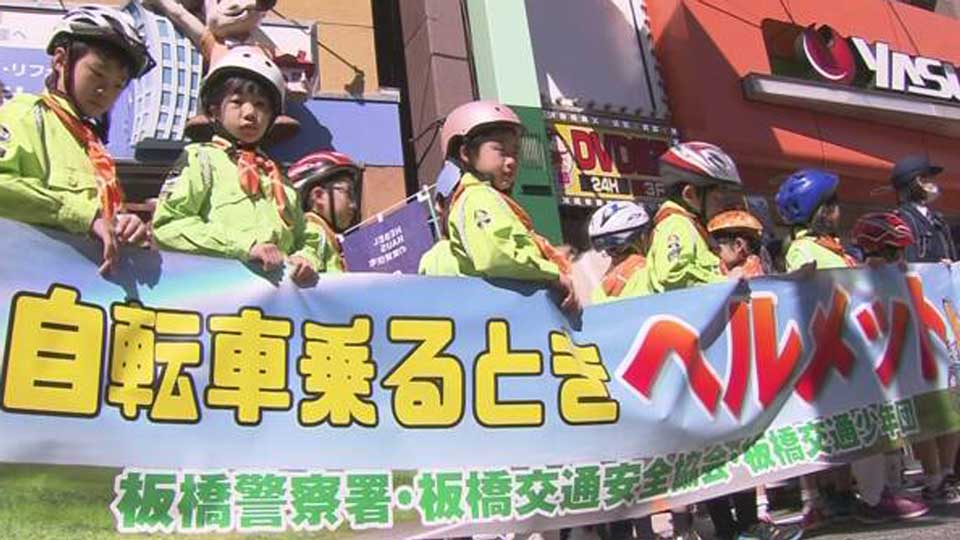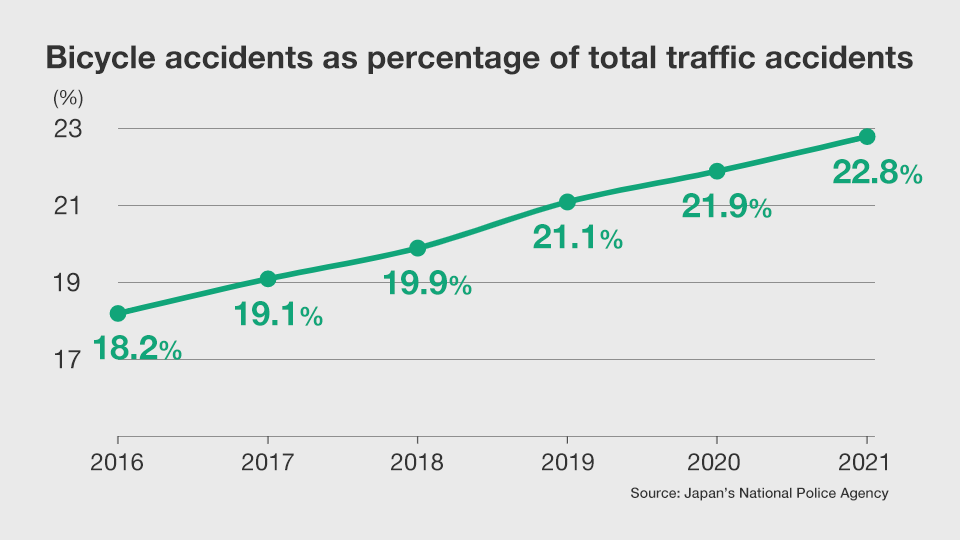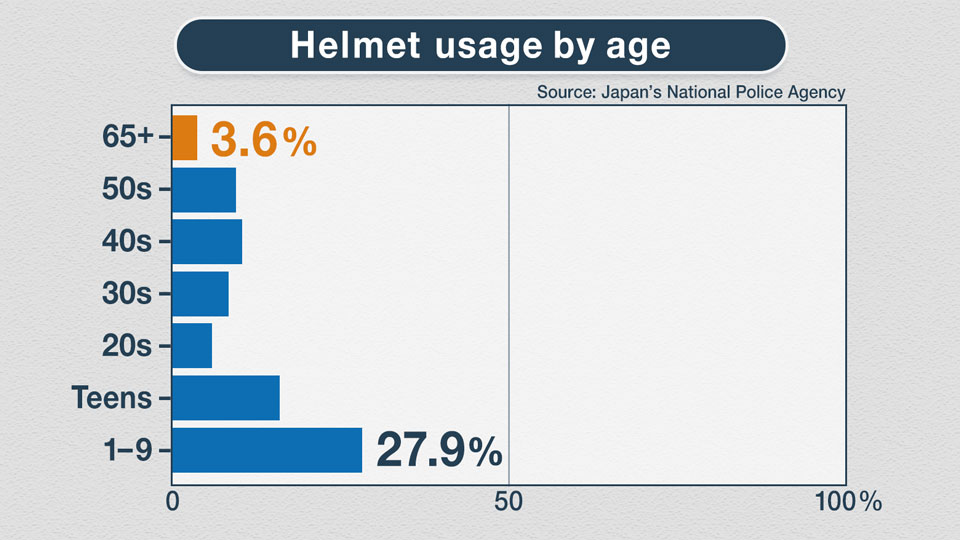Before then, helmet use was only suggested for children under the age of 13. An ordinance encouraged parents and legal guardians to tell their children in this age range to wear helmets.
The new measure comes following a survey on helmet use by the National Police Agency. It polled 16,435 people in 13 prefectures in February and March, finding that only 665, or 4 percent, wore helmets while riding.
Kumamoto Prefecture in the country's southeast had the highest rate of any prefecture at 7.8 percent, while Hyogo Prefecture had the lowest at 1.9 percent. The figures for Tokyo and Osaka were 5.6 and 2.4 percent respectively.
The agency says it will also implement measures to raise awareness about the effectiveness of helmets in reducing injuries.

Helmet sales rising
Many cyclists have been buying helmets following the introduction of the ordinance.
A bicycle shop in Tokyo's Minato Ward says sales of helmets in March were up more than 150 percent from the same month last year.
Store manager Tabuchi Kyosuke says more elderly people and women are buying helmets. He says models with simple designs have been particularly popular, with most either selling out or in short supply.

Fatality rate more than doubles for non-helmet users

The police agency says more than 68,000 bicycle riders were killed or injured in traffic accidents in 2022. Eighty-eight percent of them were not wearing helmets.
Of the 339 people killed, 179 suffered fatal head injuries.
The agency says the fatality rate in 2022 among cyclists not wearing helmets was 2.6 times higher than that of those who were wearing helmets.

The agency's data shows only 3.6 percent of people aged 65 or older wear helmets while almost 28 percent of children aged 1-9 wear them.
